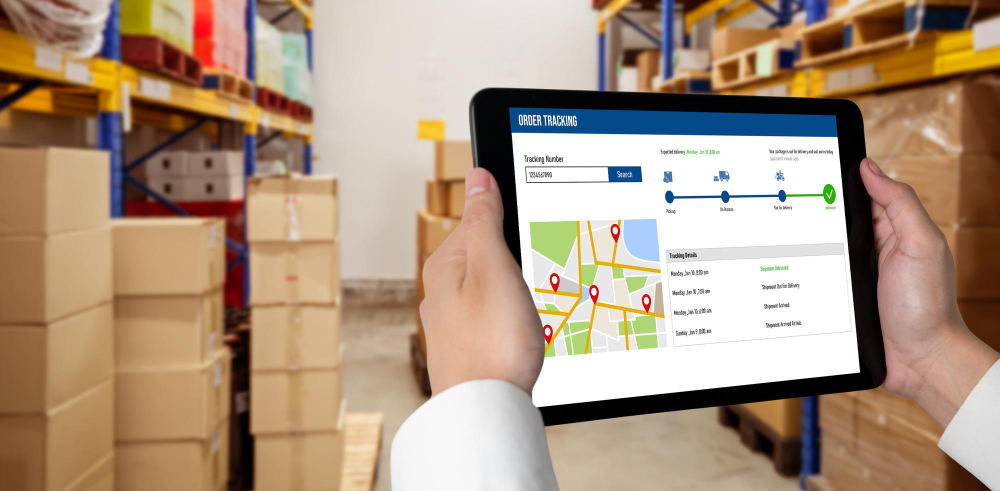Quick Links
ToggleRunning deliveries isn’t just about getting packages from Point A to Point B. It’s a whole chain of tasks happening at once. Orders coming in, drivers on the road, customers expecting updates, and you trying to keep it all under control. If you’re juggling spreadsheets, calls, and WhatsApp messages to make it work, there’s a better way. A delivery management system brings everything under one roof for you. It gives you a smarter, more organised way to run deliveries without burning out your team or confusing your customers. This guide will take a closer look at what it is, how it works, and how it can actually make your delivery operations feel smoother. Let’s get started.
What is a Delivery Management System?
A Delivery Management System, or DMS, is software that helps businesses manage their entire delivery process smoothly. Think of it as a tool that takes care of everything from planning routes to tracking deliveries, making sure goods reach customers on time and without confusion.
Depending on what your business needs, a DMS can be simple or advanced. Some systems focus mainly on basic tasks like route planning, while others come packed with extra features such as customer relationship management (CRM), inventory control, live tracking, and data analytics. In short, it’s the kind of tool that helps you deliver faster, stay organised, and keep your customers happy.
Benefits of Implementing a Delivery Management System
Implementing a delivery management system can bring you several benefits, such as:
-
Increased Efficiency
A delivery management system helps you handle orders faster and with fewer errors. Instead of manually tracking deliveries or juggling between different tools, everything is managed in one place. This means your team spends less time sorting through details and more time getting orders out on time. It also reduces mix-ups and delays, making the whole process smoother from start to finish.
-
Improved Customer Satisfaction
When deliveries arrive on time and customers can track their orders easily, satisfaction naturally goes up. A delivery management system keeps customers in the loop with real-time updates, which builds trust and confidence in your service. Happy customers are more likely to reorder and recommend your business to others, helping you grow through positive word of mouth.
-
Enhanced Visibility
With a delivery management system, you get a clear view of every step in the delivery process. You can see where drivers are, how orders are progressing, and if anything needs your attention. This visibility helps you make smarter decisions, improve routes, and quickly handle any issues before they affect customers.
-
Reduced Costs
Running deliveries manually often leads to wasted time, fuel, and manpower. A delivery management system helps you optimise routes, cut down on unnecessary trips, and save fuel costs. It also reduces paperwork and manual errors, which saves both time and money in the long run.
-
Proactive Exception Management
Delays and missed deliveries happen, but how you handle them makes all the difference. With a delivery management system, you can spot problems early and take action before they affect the customer. For example, if a driver is running late, you can send a quick alert or reschedule instantly. Staying proactive helps you maintain service quality even when things don’t go perfectly.
-
Better Workforce Management
Managing delivery staff becomes much easier with a proper system in place. You can assign tasks, track performance, and monitor routes in real time. It helps you balance workloads, ensure fair distribution of tasks, and identify who might need extra support or training. This leads to a more motivated, well-organised team and better overall productivity.
Key Features to Look for in a Good Delivery Management System
If you’re managing deliveries, the right platform can save you time, money, and a lot of headaches. Here are some features you should always look for when choosing a delivery management system.
-
Route Optimisation
This is one of the most important features to have. A good delivery management system should help you find the most efficient routes based on traffic, distance, and delivery time slots. It calculates accurate delivery windows and avoids route overlaps, helping you save fuel and time. Whether it’s scheduled orders, on-demand requests, or last-minute deliveries, smart route planning keeps everything on track and ensures your drivers hit their delivery targets.
-
Delivery Zone & Area Management
Being able to manage zones and areas is important when you’re handling multiple locations or large cities. A good system lets you break down your delivery regions so you can assign orders to the right teams and balance workloads. This kind of control helps reduce delays and keeps things running smoothly across all areas.
-
Tracking and Customer Notifications
Customers want to know where their orders are. A good system should offer real-time tracking so both you and your customers can see the status of each delivery. On top of that, automated notifications through SMS, email, or app alerts keep customers informed about expected arrival times or any delays. This builds trust and improves the overall delivery experience.
-
Partner and Fleet Integration
If you work with third-party logistics partners or have a mixed fleet, this feature is a must. It lets you manage all your delivery partners and drivers in one place. You can assign tasks, track their performance, and stay in control of your entire network without switching between tools.
-
Driver App or Delivery Agent Interface
Your delivery agents need a user-friendly app to do their job well. A good delivery system includes a dedicated interface or mobile app for drivers. It shows them their tasks, routes, customer details, and allows them to update statuses on the go. This reduces delays, miscommunication, and helps them stay focused.
-
Exception and Return Management
Sometimes things don’t go as planned. Deliveries fail, customers aren’t home, or packages need to be returned. Your delivery management system should help you handle these situations without any confusion. It should let drivers report issues in real time, and make it easy to reschedule, reassign, or process returns smoothly.
-
Analytics and Reporting
To improve your delivery operations, you need to know what’s working and what’s not. Built-in reports help you track important metrics like delivery times, success rates, failed attempts, and more. With regular insights, you can fix bottlenecks, reward top performers, and make informed decisions that save time and money.
-
Scalability and Automation
As your business grows, your delivery system should grow with you. Scalability means the platform can handle more orders, new zones, and additional drivers without slowing down. Automation helps reduce manual work, from route planning to notifications and reporting. Together, scalability and automation let you expand your delivery operations without burning out your team.
Streamline your Delivery Management System with Zopping
If you’re running an eCommerce or hyperlocal business, you already know how messy delivery operations can get. One app for orders, another for tracking, spreadsheets for route planning, and a dozen calls a day just to stay in the loop. It’s exhausting, and it’s easy to make mistakes.
That’s where Zopping comes in. As a no-code store builder and delivery management platform, Zopping brings everything under one clean, easy-to-use system. From order management to delivery tracking, it’s all there in one place. You can streamline your entire delivery process without having to build a system from scratch or hire a tech team to patch things together.
Customers today expect quick, reliable, and trackable deliveries. If you can’t offer that, you risk losing both sales and trust. Zopping helps you stay ahead by giving you the tools to manage deliveries smarter, faster, and with less effort.
So if you’re serious about growing your online store or local delivery service, Zopping can help you skip the chaos and build a system that actually works. Ready to grow? Book your Zopping demo today!
Frequently Asked Questions (FAQs)
What is a Delivery Management System in eCommerce?
A Delivery Management System (DMS) is a tool that helps eCommerce businesses handle everything related to delivering products. It takes care of order dispatch, plans the best routes, tracks deliveries in real time, and gives reports on how everything is performing. In short, it keeps deliveries running on time and without hassle.
Why is a Delivery Management System important for online businesses?
A good DMS keeps your customers happy with on-time deliveries and live tracking updates. It also helps you cut down on unnecessary costs by planning better routes and avoiding delays. On top of that, it gives you full control and visibility over your delivery process, which becomes even more important as your business grows.
What are the important features of a good Delivery Management System?
Some of the must-have features in a solid DMS include:
- Easy delivery zone and route setup
- Real-time tracking and alerts
- Managing delivery drivers or partners
- Getting proof of delivery
- Reports and insights to improve performance
How can a Delivery Management System help reduce logistics costs?
By planning smarter delivery routes, grouping orders efficiently, and assigning the right drivers to each job, a DMS cuts down on fuel use, waiting time, and human errors. This leads to fewer delays, lower costs, and better use of your delivery team’s time.
How does Zopping help with delivery and order management?
Zopping comes with built-in delivery tools that let you create delivery zones, connect with logistics partners, and track every order as it moves. Since Zopping is a no-code platform, it automatically syncs your orders, inventory, and delivery updates, helping you ship faster and stay organised.



